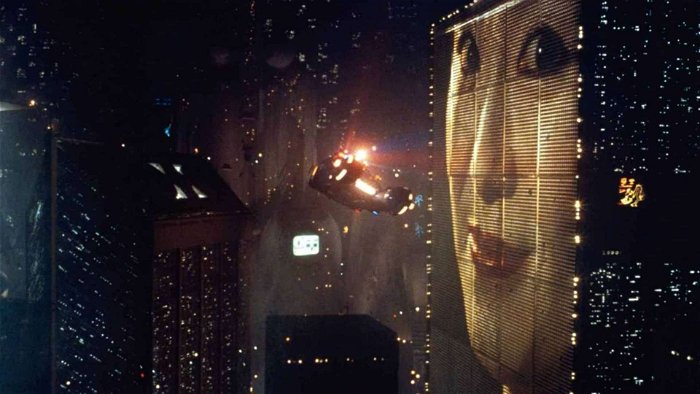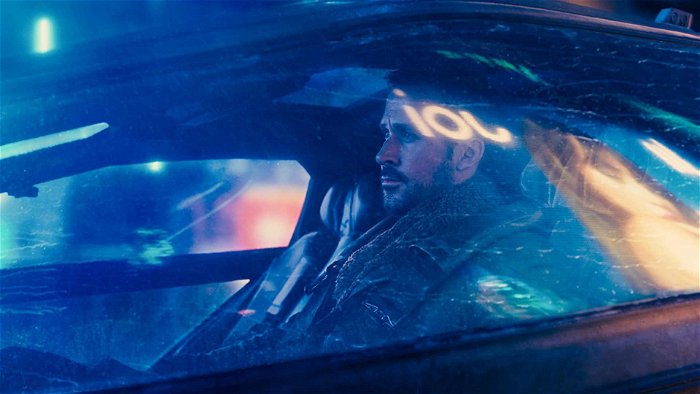So, here we are. After literally decades of rumours and false starts, Blade Runner is now a franchise. In a world of IP driven blockbuster sequels, this film makes sense. Mad Max, Star Wars, Star Trek, It, Evil Dead, even Saw, all your old genre movie favourites that sunk their teeth deep enough into the cultural zeitgeist to leave marks have returned.
It only makes sense that happens for Blade Runner as well. After all, Ridley Scott’s 1982 classic created a dark and brooding future aesthetic that essentially defined how all sci-fi urban future worlds were designed from then on (whether it was copying the Blade Runner world or deliberately running counter to it). The thing is that the longest lasting impression and influence of Blade Runner was always the aesthetic. The actual content of the film was frequently forgotten in favour of the glorious visuals. Now that we have Blade Runner 2049 beautifully recapturing not just the look, but also the tone, themes, cynicism, and slow brooding pace of the original—and I’ve got a feeling that there’s going to be some backlash.

The thing about Blade Runner is that it emerged a sci-fi masterpiece as much by accident as design. Sure, the rainy, polluted, overpopulated, multicultural, and advertisement-clogged cityscapes of the film were deliberately conceived and resonated deeply. But even then, part of the reason the film was almost exclusively set at night was so that the lush green California hills peeking out behind the vast sets remained invisible (as well as to help conceal the lines on all the model effects). The smoke was similarly there to make things bigger and hide flaws. It added to the future noir feel, but was all as much pragmatically planned as artistically conceived. It just ended up being perfect.
Likewise, all of the actors perform with an oddly quiet detachment that suits the thematic emphasis on urban disconnection, yet was as much a result of Ridley Scott never talking to his actors about performance and doing endless takes for the sake of technical perfection as anything planned (the exception to the rule being Rutger Hauer, who unsurprisingly gave the best and liveliest performance). The hypnotically slow pacing and curiously opaque mysteries of the plot were partially by design and partially because Scott didn’t really care about the mechanics of storytelling at the time. That all added to the art house friendly ambiguity of the movie—just by accident.

Of course these days people view everything in Blade Runner as deliberate artistic choices, and fair enough, it all adds to the film’s appeal (along with the never ending releases of fresh “director’s cuts” even truer to Ridley Scott’s vision, whatever that means). Well, that’s true for those who have actually engaged with Blade Runner anyways. This is one of those films that everyone knows because it’s been so prominent in the cultural zeitgeist for so long. However, more people have seen stills and clips and even the poster for Blade Runner than the actual movie and the sci-fi aesthetic is so beautifully conceived and executed that you can understand the influence and impact of the movie through osmosis without actually seeing it.

Obviously, we’re still talking about one of the most infamous cult movies of all time here. So some people have seen Blade Runner and do love it. A vast amount even. Not enough to make the sequel into the blockbuster success Warner Brothers is banking on, however, the company likely realizes that and took the risk because of another similar recent success for the studio: Mad Max: Fury Road. That was another iconic 80’s sci-fi flick given a decades late sequel and it ended up being more successful than any previous Mad Max movie. It was a bold and ambitious director-driven vision filled with ideas, but it was also essentially a two-hour long action sequence with a few breaks. Viewers who didn’t really know the original films could dive in no problem because Miller doesn’t retain continuity and puts the pedal to the goddamn metal to ensure every second of the flick entertains regardless of the higher ambitions he infused into the film. It could win over new audiences and I’ve encountered plenty of people who adored Fury Road, but didn’t appreciate The Road Warrior when they went back to it because it felt slow in comparison (which is insane, but that’s the topic of another essay). That won’t happen with Blade Runner 2049.
I love the Blade Runner sequel. I think that Denis Villeneuve and his team achieved the impossible by making a 2 hour and 45 minute existential sci-fi noir with astounding visuals. He nailed the Blade Runner aesthetic in ways that lead to beautiful posters and trailers to get butts in seats. Yet, once those butts are in seats what unfolds isn’t exactly popcorn-friendly. It’s depressing and ambiguous and slow and confusing and demands audience engagement to appreciate the filmmakers’ intensions. You know, like Blade Runner. Those who worship at the altar of the ground-breaking 1982 future noir will likely see all that, love it, and watch it many times until they kinda sorta but not really understand what’s going on. Those who come in excited by this super cool and dark looking Ryan Gosling blockbuster with a familiar title might be bored to tears and leave alienated and upset. That makes sense. That happened when the first Blade Runner came out. However, it won’t lead to immediate financial success on the scale Warner Brothers hopes after spending $150 million on the budget and likely almost as much on marketing. Sure, this thing could live on and bring in plenty of bucks in future years as the cult grows. That happened last time. It just might not be enough to make it a success in 2017 and that’s all the studio cares about.
So I’m very curious how people will react to Blade Runner 2049 when as it spools out to the masses. I’ve got a feeling many will hate the movie. It might even lead to an online backlash of nerds turning their backs on the original Blade Runner (that’s already happened on a small scale amongst film critics). It’ll be interesting to watch all that play out. I have no idea how it will go, because the thing is that Blade Runner’s reputation has always been complicated. It’s a cult movie that influenced so many future projects that it’s become a revered classic. Yet, both it and Villeneuve’s new sequel don’t play nice or pander for mass success. They are weird and dark movies for weird and dark people. You just wouldn’t necessarily guess that from all the toys, tattoos, and t-shirts.
Liked this article and want to read more like it? Check out Pill’s take on Blade Runner 2049, American Made, and It! He also had a chance to sit down with Guillermo Del Toro. Check out his interview here!
Never miss when new CGM articles go out by following us on Twitter and Facebook!
Want to see more videos? Subscribe to our YouTube channel and check out the First 15 – Marvel vs. Capcom: Infinite and Cuphead!
Don’t forget to tune in every Friday the Pixels & Ink Podcast to hear the latest news, previews, and in-depth game discussions!
CGMagazine is Canada’s premiere comics and gaming magazine. Subscribe today to get the best of CGM delivered right to your door! Never miss when a new issue goes live by subscribing to our newsletter! Signing up gives you exclusive entry into our contest pool. Sign up once, you’ll have a chance to win! Sign up today!




